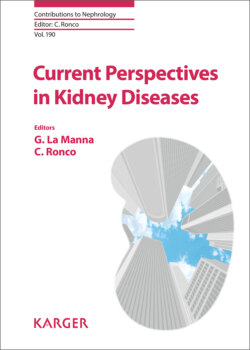Читать книгу Current Perspectives in Kidney Diseases - Группа авторов - Страница 22
На сайте Литреса книга снята с продажи.
Antibiotic Dosing during RRT
ОглавлениеIn severe sepsis and septic shock early, appropriate, empiric and broad-spectrum antibiotics are the mainstay of treatment and represent a crucial factor in improving the patient outcome. In septic patients under RRT, the optimization of antibiotic dosing is mandatory but, unfortunately, data to guide dosing in these patients are limited. Patients are at risk of both over- and under-dosing with consequent risk of drug toxicity or treatment failure. When an antibiotic regimen is prescribed in S-AKI patients treated with RRT, several factors have to be considered: pharmacokinetics, patient weight, residual renal function, hepatic function, mode of RRT (membrane and surface area, sieving coefficient, effluent and dialysate rate and blood flow rate), minimum inhibitory concentration, volume overload etc. [70]. Studies that determine the serum antibiotic concentrations are very useful in establishing the correct dosage in critically ill patients, but available data are often based on old RRT modalities resulting in unhelpful/inaccurate dosing recommendations. The application of these older doses in Monte Carlo simulation studies revealed that many of the recommended dosing regimens will never attain pharmacodynamic target [71]. For these reasons, some authors encourage clinicians to prescribe antibiotics, in this vulnerable population, with large loading dose and higher maintenance doses to reach the targets [70, 71].
